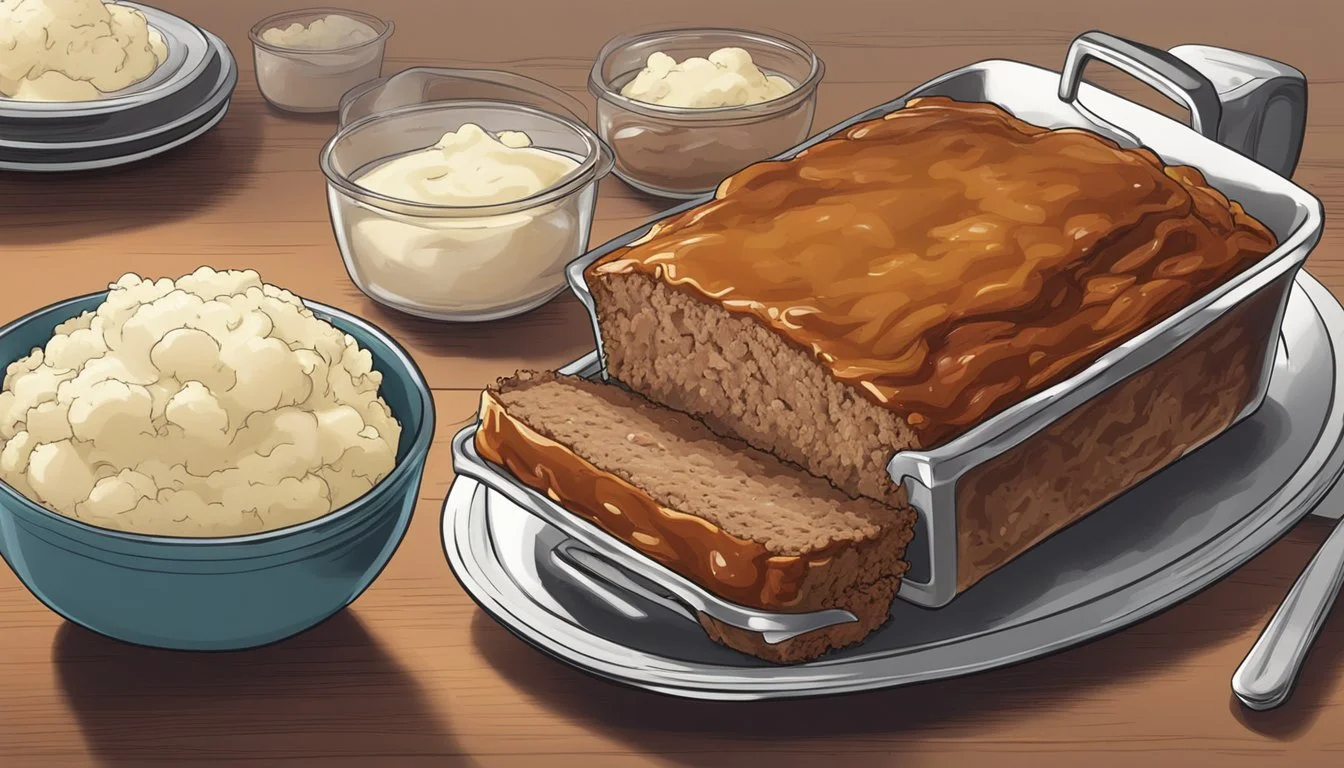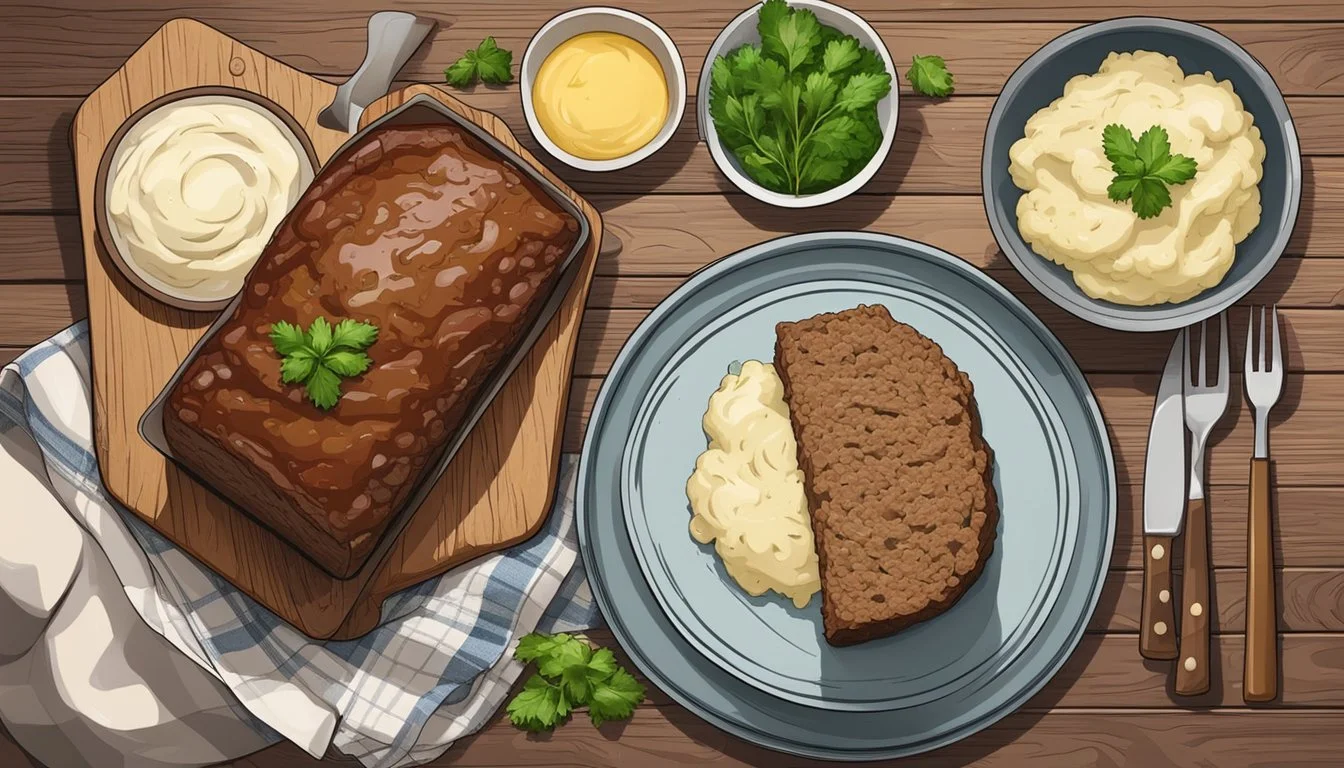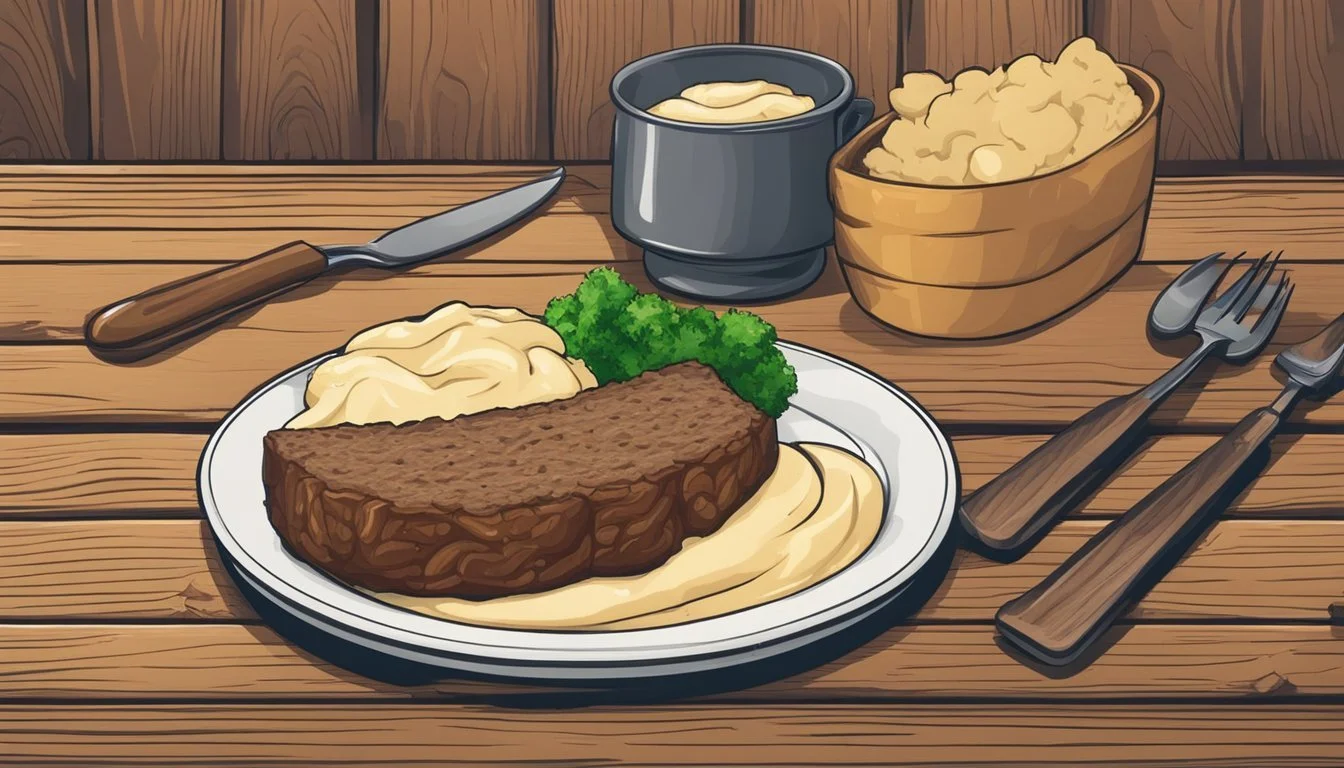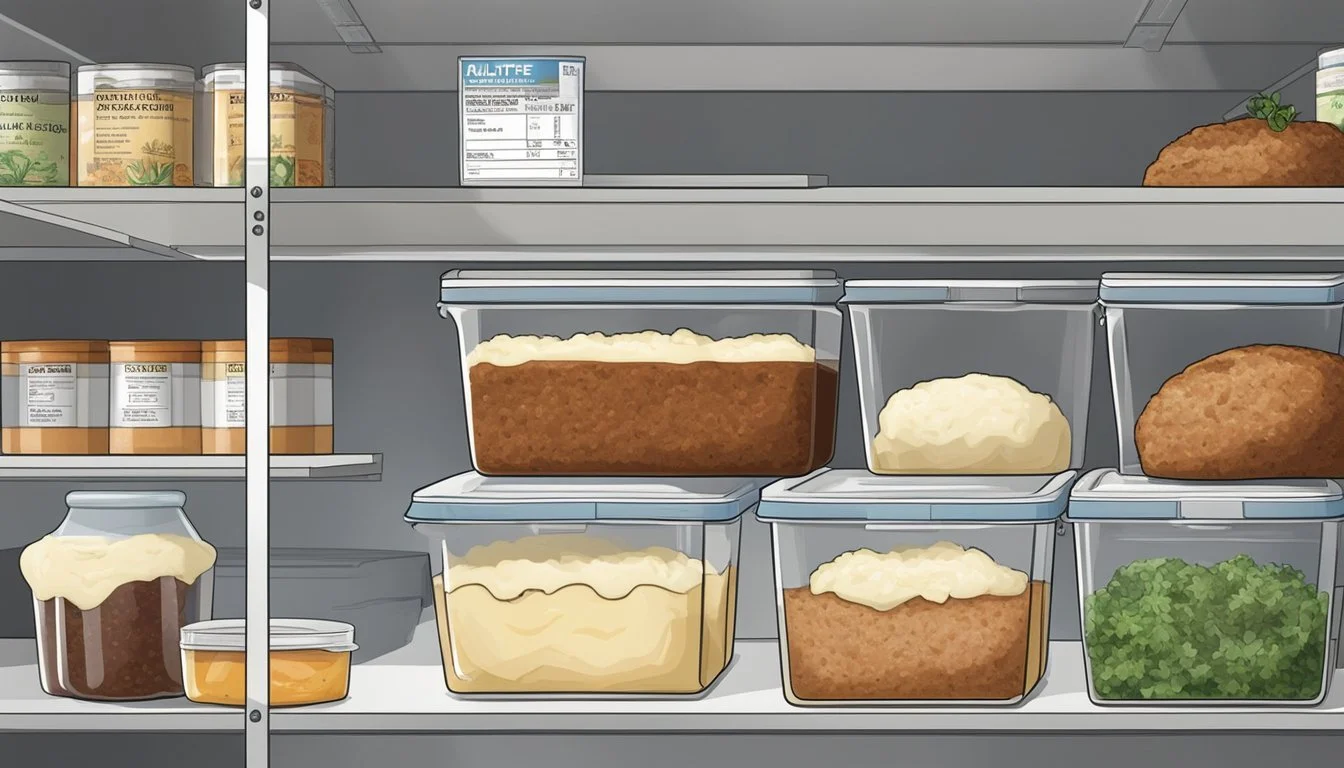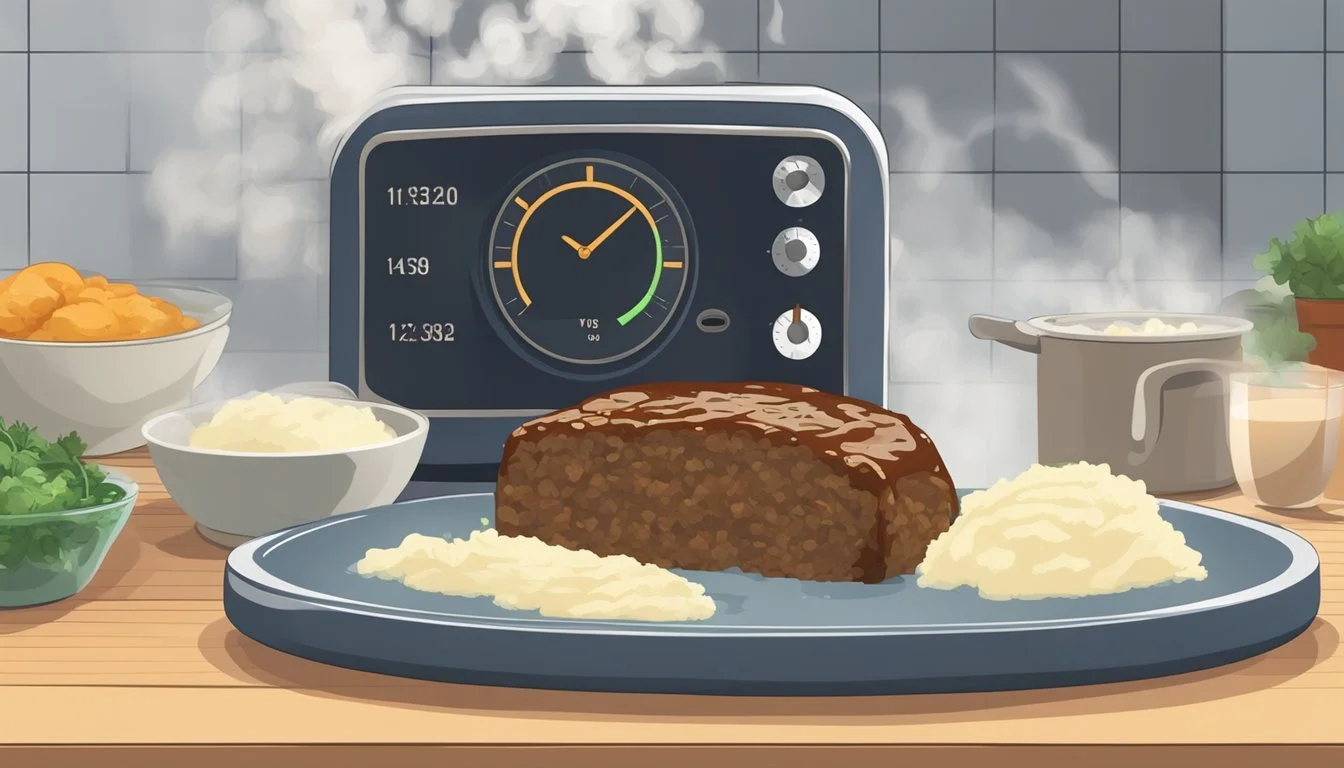How Long Does Gluten-Free Meatloaf with Mashed Potatoes Last?
Expert Storage Tips
Knowing how long gluten-free meatloaf with mashed potatoes lasts is essential for planning your meals and avoiding food waste. Whether you've made a big batch for meal prepping or simply have leftovers from a hearty dinner, understanding the shelf life of these dishes can save you time and ensure you enjoy them at their best. Gluten-free meatloaf with mashed potatoes typically lasts up to four days in the refrigerator when stored properly in airtight containers.
For those who enjoy freezer-friendly options, this classic comfort food combination can be frozen to extend its lifespan. When correctly frozen, gluten-free meatloaf can last up to three months, while mashed potatoes can be stored for about one to two months without compromising texture too much. Be sure to label your containers with dates to keep track of freshness.
To maintain the quality and taste of your gluten-free meatloaf and mashed potatoes, consider reheating them gently in the oven or microwave, adding a splash of milk or broth to the potatoes if they seem dry. These simple tips will ensure that every bite of your leftovers is as delicious as the day they were made.
Ingredients
Creating a flavorful gluten-free meatloaf requires several key ingredients.
Meat and Binders
Ground Beef: Typically, 80% lean ground beef is recommended for a juicy texture.
Eggs: Acts as a binder to hold the loaf together.
Gluten-Free Breadcrumbs: Provides structure and absorbs moisture, keeping the meatloaf tender.
Seasonings and Spices
Salt and Pepper: Essential for seasoning.
Onion: Finely chopped for flavor and moisture.
Garlic: Minced or in powder form, adds depth to the flavor.
Parsley and Thyme: Fresh or dried, these herbs enhance taste.
Other Essential Ingredients
Worcestershire Sauce: Adds a savory depth. Ensure it’s gluten-free.
Ketchup: Commonly used in the meat mixture and as a glaze on top.
Optional Ingredients
Oatmeal or Gluten-Free Oats: Alternative to breadcrumbs for texture and binding.
Milk: Helps in blending ingredients smoothly.
Mustard and Apple Cider Vinegar: Introduce a tangy flavor if desired.
Onion Powder and Garlic Powder: Alternatives or additives to enhance taste.
When combined with gluten-free mashed potatoes, these ingredients ensure a delicious and cohesive dish. Each component plays a critical role in the texture, flavor, and binding of the meatloaf.
Preparing the Meatloaf
To prepare a successful gluten-free meatloaf, one must pay attention to mixing the ingredients properly, shaping the loaf, choosing an appropriate pan, and meticulously applying the glaze.
Mixing the Ingredients
Begin by selecting lean ground beef or a mixture of ground meats for optimal flavor and texture. Place the meat in a large mixing bowl. Add gluten-free ingredients such as breadcrumbs, oatmeal, or gluten-free oats to help bind the mixture. Incorporate salt, pepper, and any preferred seasoning mix.
Don't forget the wet ingredients: whisk together eggs, milk, and Worcestershire sauce if desired. Mix these into the meat mixture until evenly distributed. The key is to combine well but not overmix, to avoid a dense meatloaf. Consistency should be moist yet firm enough to hold shape.
Shaping the Loaf
Transfer the mixed meatloaf ingredients onto a clean surface or directly into the baking pan. Shape the mixture into an even loaf, ensuring there are no cracks that could cause uneven cooking.
To give it the classic meatloaf shape, gently press down on the top while smoothing the sides. Ensuring uniform thickness helps in consistent cooking and prevents undercooked areas.
Choosing the Right Pan
Using the appropriate pan is crucial. A standard loaf pan (8x4 inch or 9x5 inch) is most common for shaping standard-sized meatloaf. Line the pan with parchment paper to make transferring the loaf easier post-cooking.
Alternatively, an 8x8 square pan can be used for a different shape. For crispy edges, some prefer a baking sheet approach, forming the loaf free-form. Temperature control is key regardless of the pan choice.
Applying the Glaze
A flavorful glaze adds a sweet and tangy finish. Common glaze components include ketchup and brown sugar. Mix these until smooth and let it sit. Brush a portion of the glaze onto the meatloaf before it goes into the oven, reserving some for later.
Partway through baking, usually around 45 minutes at 350°F, apply another layer of glaze. This step ensures a beautifully caramelized texture on the exterior. If a bold glaze is preferred, increase the temperature to 400°F toward the end.
Cooking Method and Times
Cooking gluten-free meatloaf with mashed potatoes requires attention to specific details, particularly around cooking times and methods, to ensure both the meatloaf and the potatoes are cooked perfectly.
Oven Baking
Oven baking is a classic method. Start by preheating the oven to 375°F (190°C). Place the meatloaf in a loaf pan and bake for about 45 minutes. Use a meat thermometer to check that the internal temperature reaches 160°F (71°C).
For mashed potatoes, peel and cut them into chunks, then boil until tender. Mash with butter, salt, and a bit of milk for a creamy texture.
Instant Pot Cooking
Using an Instant Pot can save time and maintain moisture. Place potatoes with water at the bottom of the pot. Create an aluminum foil "bowl" for the meatloaf, which helps keep it intact and prevents it from mixing with the water.
Set the Instant Pot to manual high pressure for 28 minutes. Afterward, use a meat thermometer to check that the meatloaf reaches an internal temperature of 160°F (71°C).
Preparing the Mashed Potatoes
When making gluten-free mashed potatoes for your meatloaf dish, choosing the right type of potatoes, using proper boiling techniques, mashing, and seasoning, and considering dairy-free alternatives are key steps to ensure both flavor and texture are perfect.
Selecting Potatoes
For gluten-free mashed potatoes, Russet or Yukon Gold potatoes are recommended.
Russet potatoes are starchy, which provides a fluffy texture, while Yukon Golds offer a creamier consistency.
Selecting good quality potatoes without blemishes or sprouts enhances the final dish.
Avoid waxy potatoes like Red Bliss as they can result in a gummy texture when mashed.
Boiling Technique
Begin by peeling and cubing the potatoes into uniform pieces.
Place them in a large pot and cover with cold water, ensuring the water level is about an inch above the potatoes.
Add approximately one tablespoon of salt to the water.
Bring the mixture to a boil over medium-high heat. Reduce to a simmer and cook for 10-15 minutes, or until the potatoes are easily pierced with a fork.
Mashing and Seasoning
Once boiled, drain the potatoes and return them to the pot to allow excess moisture to evaporate.
Mash the potatoes using a potato masher or a ricer for a smoother texture.
Add butter, salt, and black pepper to taste.
Gradually mix in warm milk or cream until reaching the desired consistency.
For extra flavor, incorporate garlic powder or freshly ground black pepper.
Dairy-Free Variations
For a dairy-free version, replace the butter with olive oil or a dairy-free margarine.
Substitute regular milk with almond milk or another plant-based milk of choice.
These alternatives maintain the creamy texture without compromising on flavor.
Ensure all ingredients used, including seasonings, are gluten-free.
By following these steps, you'll prepare delicious mashed potatoes to complement your gluten-free meatloaf.
Storing and Shelf Life
Proper storage is essential for maintaining the freshness and safety of gluten-free meatloaf with mashed potatoes. The key methods include refrigeration for short-term storage and freezing for longer-term storage.
Refrigeration
Refrigerating gluten-free meatloaf with mashed potatoes ensures it remains safe and retains its quality for a limited period. To maximize the shelf life, the cooked meatloaf should be wrapped tightly in aluminum foil or plastic wrap, or transferred to an airtight container. Refrigeration should be done at a temperature of 40°F (4°C) or below.
When stored properly in the fridge, the meatloaf and mashed potatoes will stay fresh for up to 3-4 days. Ensuring minimal exposure to moisture and air will help maintain the flavor and texture. It's advisable to place the container towards the back of the refrigerator where the temperature is more consistent.
Freezing
For longer storage, freezing is an effective option. The meatloaf and mashed potatoes should be wrapped in heavy-duty aluminum foil or plastic wrap, or placed in a freezer-safe, airtight container. Labeling the packaging with the date of storage is a good practice to keep track of its shelf life.
Frozen meatloaf with mashed potatoes can last for up to 3-4 months without significantly affecting its taste and texture. To thaw, transfer it to the refrigerator overnight before reheating. When reheating, make sure it reaches an internal temperature of 165°F (74°C) to ensure safety. Avoid multiple freeze-thaw cycles as they can degrade the quality of the meal.
Reheating
To reheat gluten-free meatloaf with mashed potatoes and maintain their best quality, using an oven is a recommended method.
First, preheat the oven to 250°F (121°C). Place the meatloaf in an oven-safe dish and cover it with aluminum foil to retain moisture. This helps prevent the meatloaf from drying out. Reheat for 25-30 minutes.
If the meatloaf is too dry, add some broth, gravy, or tomato sauce before covering it with foil.
For reheating in a microwave, slice the meatloaf into individual portions. Place the slices on a microwave-safe plate and cover them with a microwave-safe lid or damp paper towel. Use medium power (50-70%) and reheat in short intervals of 1-2 minutes, checking between intervals to avoid overheating.
When storing leftovers, keep the meatloaf and mashed potatoes in an airtight container. This helps preserve their texture and flavor.
Tips for Reheating:
Oven: Use low temperatures (250°F), add moisture, cover with foil.
Microwave: Use medium power, short intervals, cover with damp paper towel.
Remember, keeping the dishes moist and properly covered is key to a successful reheating experience.
Nutrition Information
When considering nutrition information for gluten-free meatloaf with mashed potatoes, it is important to evaluate the ingredients used.
Common Ingredients:
Lean Ground Beef or Ground Turkey: These are primary protein sources in meatloaf.
Gluten-Free Bread Crumbs: Replaces traditional breadcrumbs for gluten sensitivity.
Eggs: Used as a binder.
Milk: Adds moisture.
Vegetables: Often includes onions and garlic for flavor.
Key Nutrients per Serving:
Nutrient Amount Calories ~250-350 kcal Protein ~15-25 grams Carbohydrates ~20-30 grams Fat ~10-20 grams
When made with lean ground beef, there tends to be higher fat and calorie content compared to ground turkey.
Advantages of Using Lean Ground Beef:
Richer flavor profile.
Advantages of Using Ground Turkey:
Lower in saturated fat.
Fewer calories overall.
Mashed potatoes often contain milk, butter, and potatoes. This combination provides:
Calories: Vary based on the amount of butter and milk used.
Carbohydrates: Primarily from potatoes.
Fat: From butter and milk.
To ensure a balanced meal, consider adding a side of vegetables for extra vitamins and fiber.
Serving and Accompaniments
Enhancing your gluten-free meatloaf with complementary side dishes and sauces can elevate the meal, turning it into a comforting and satisfying experience. Classic and creative sides both work well, and the right sauce can add richness and flavor.
Side Dishes
Pairing gluten-free meatloaf with side dishes like mashed potatoes or baked potatoes is a traditional choice that complements the hearty nature of the meatloaf. Green beans seasoned with garlic and butter provide a healthy, crunchy counterpart. Other vegetables, such as roasted carrots or steamed broccoli, also work well.
For more variety, consider gluten-free pasta salads or quinoa options. These can make the meal more balanced and offer different textures. Cornbread or gluten-free dinner rolls can also be excellent additions to the meal.
Sauces and Toppings
A flavorful ketchup glaze brushed over the meatloaf can add a tangy sweetness that many find irresistible. To prepare, mix ketchup with brown sugar and a touch of mustard. This mixture can be applied before baking and during the last few minutes of cooking.
Barbecue sauce is another popular choice for those who enjoy a smokier, richer taste. You can use a store-bought gluten-free barbecue sauce or make your own by combining tomato sauce, vinegar, and spices.
For a savory option, a mushroom gravy can be made by sautéing mushrooms and shallots, then adding gluten-free broth and thickening with gluten-free flour. This gravy pairs well with mashed potatoes and adds depth to the meatloaf.

